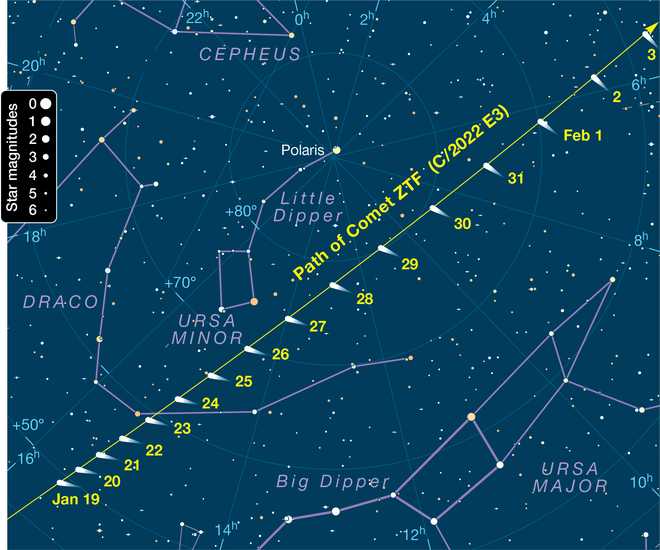Comet passing closest to Earth this week, visible over Mass., New England
A recently discovered comet will make its closest path to Earth this week. New England sky gazers can see the comet, named ZTF (C/2022 E3), with the aid of good binoculars or a telescope.
Comet ZTF will be located between the Big and Little Dippers, in the northern sky, over the last couple nights of January.
The best times to catch a glimpse of the comet are in the early morning hours, after moonset, according to Cambridge-based Sky and Telescope.
Contrary to many reports, the comet will not appear green to most people, according to Sky and Telescope's chief editor, Kelly Beatty.
"Our eyes can't see color well at night," Beatty said, adding, "A green hue isn't rare with comets."
Beatty cautions night sky viewers not to set expectations too high when trying to see Comet ZTF.
"Strong moonlight and light pollution will be “comet killers” because the comet is just a fuzzy ball," Beatty said.
The bright moon will interfere with viewing as the moon heads toward its full phase, between Feb. 3-5. Then, the best viewing times will be after sunset, before the moon rises, between Feb. 6-22.
Video Below: Line of lights spotted in skies over Mass.
Video Below: New 'Space Adventure' immersive exhibit launches
Video Below: Meet MIT astrophysicist who will get to use Webb telescope


